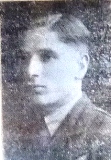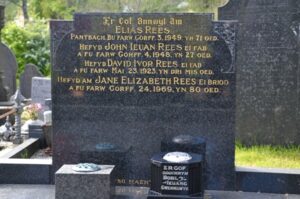Penrhiwllan is a small village situated on the A475, approximately four and a half miles east of Newcastle Emlyn, near Aberbanc. In the village is a memorial hall, which was rebuilt in 1992, and contains two war memorials with photographs of the fallen of both world wars, both of which were brought here from Aberbanc School when it was closed down. Many thanks to Huw Davies for the copies of the portraits of the men, and to Mike Berrell for the photographs of the memorials.
The Great War, 1914-1918
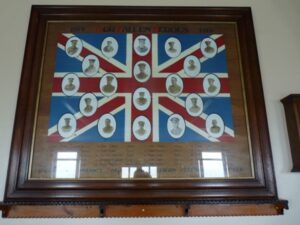
Herbert Augustus Cloake, Driver, 74865, Royal Field Artillery. Herbert was the son of Herbert and Elizabeth Cloake, of Islington, London. He resided at Cwrcoed, Penrhiwllan prior to the war, where he worked as a Carter, and at the outbreak of war enlisted into the Royal Field Artillery as a Driver. Herbert was posted to France, landing there on 23 August 1914, where he was attached to the 27th Battery, Royal Field Artillery. Herbert was badly wounded during the First Battle of Ypres, where the BEF managed to stem the German drive towards the Channel ports. He was evacuated to the Base Hospital at Wimereux where he died on 26 November 1914. Herbert was 19 years old, and is buried at Wimereux Communal Cemetery, France.
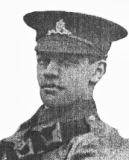

David George Davies, Stoker 1st Class, K/27472, Royal Navy. David was born at Llandyfriog on 15 January 1897, the son of Evan and Margaret Davies. His parents moved to 112, Priory Street, Carmarthen, but David resided at 10, Railway Terrace, Henllan prior to the war. He enlisted into the Royal Navy, and was posted to HMS Vivid, the Royal Naval establishment at Portsmouth. David died of sickness at Stonehouse, Devon on 2 May 1917. He was 21 years old, and is buried at Llandyfriog (St. Tyfriog) Churchyard.
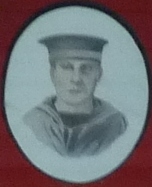
Evan William Davies, Private, 65352, Welsh Regiment. Evan was the son of Ebenezer and Mary Davies, of School House, Henllan. He enlisted at Carmarthen into the army on 1 November 1916, and was posted to France on 7 April 1918, where he joined the 2nd Battalion, Welsh Regiment. The battalion had been on the Western Front since the outbreak of war, attached to 3 Brigade, 1st Division, and had fought in almost every major battle thereafter. After spending the Winter in Flanders, the Division was near Estaires when the German Spring Offensive caught them, fighting through the Battles of Estaires, Hazebrouck, and Bethune before being moved South again to Arras to rebuild. From here, the 1st Division took part in the great offensive, which was to ultimately win the war, fighting at the Battle of Drocourt-Queant and at the Battle of Epehy during August and September 1918. The Division pushed on towards the St. Quentin Canal, and after crossing the Hindenburg Line fought at the Battles of Beaurevoir, the Selle and the Sambre. Evan was killed at the Sambre on 23 October 1918. He was 19 years old, and is commemorated on the Vis-En-Artois Memorial, France.
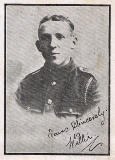
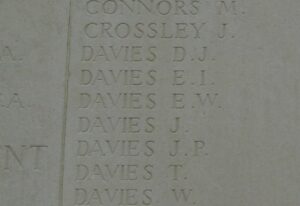
Rhys Beynon Davies, Second Lieutenant, Royal Flying Corps. Rhys was born on 15 May 1896, the son of James and Margaret Davies, of Llwyngwern, Henllan. He was educated at Aberbanc and at Llandyssul County School, before attending St George’s School in London, where he joined the Officer Training Corps. He was commissioned into the 4th Battalion, Northumberland Fusiliers on 5 August 1915, and landed in France on 14 March 1916, where he was attached to a Trench Mortar Battery. On 23 October 1916, Rhys was attached to 2 Squadron, Royal Flying Corps, as an Observer. He was wounded on 11 December 1916, while on patrol over Hulloch Wood, Loos. After a spell home recuperating, Rhys rejoined his Squadron in France on 23 February 1917. The Battle of Arras was launched the following month, and 2 Squadron flew many reconnaissance missions over the German lines, directing artillery fire onto key positions. On 1 May 1917, Rhys was flying as an Observer in an Armstrong Whitworth F.K.8., nicknamed the ‘Big-Ack’, biplane, Serial A9997, which was piloted by W.P. Eastwood, when they were attacked by German fighters. After a brief fight, the outmatched F.K.8. received a bullet in its fuel tank, which exploded, sending the aeroplane crashing to the ground. Rhys and his pilot were killed immediately. Rhys was 20 years old, and is buried at Monchy-Breton Churchyard, France.
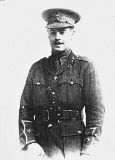
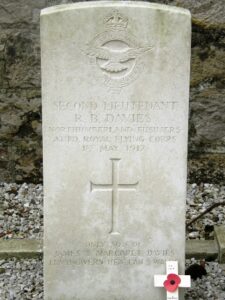
Llewellyn Evans, Lance Corporal, 136, Welsh Horse. Llewellyn was born at Cenarth in 1880, the son of David and Anne Evans. He married in 1904, and resided with his wife Mary Evans at 8, Railway Terrace, Henllan. Llewellyn was a veteran, who had served during the Boer War, and he enlisted at Henllan into the 1/1st Battalion, Welsh Horse Yeomanry, which was originally raised as a Welsh Cavalry unit. Around February 1915 the Welsh Horse joined the 1/1st Eastern Mounted Brigade, 1st Mounted Division in Woodbridge area, but in September 1915 dismounted and sailed from Liverpool in the SS Olympic on 25 September, landed at Anzac, where it became attached to the 54th (East Anglia) Division. The Welsh Horse were used as tunnellers on Gallipoli, and it was while working on a tunnel that Llewellyn was killed, when the Turks blew a mine on 20 November 1915. Llewellyn was buried at 7th Field Ambulance Cemetery, Gallipoli, alongside two of his comrades who died with him, Llewellyn Jones of Llangeler, and W.C. Lewis of Carmarthen.
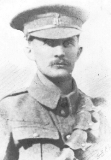
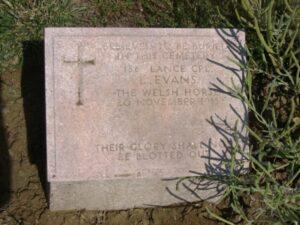
John George Griffiths, Driver, 80296, Royal Field Artillery. John was the son of Richard and Anne Griffiths, of Derwanlas, Llandyfriog. He enlisted at Mountain Ash into the Royal Field Artillery, and served with their ‘A’ Battery, 76th Brigade, attached to the Guards Division. The Division has the distinction of being formed in France in August 1915. The various Guards units that had been with other Divisions were withdrawn to be brought together to create this fine formation. It remained on the Western Front throughout the war and saw its first major action during the Battle of Loos on 25 September, 1915, remaining in the area during the coming months, where they also fought in the subsequent Action of Hohenzollern Redoubt. In July, 1916 the Division moved to the Somme, where they fought at the Battle of Flers-Courcelette, and then at the Battle of Morval, capturing Lesboeufs Village. They remained here for the winter, which is where John took ill. He died of bronchitis on 6 March 1917, aged just 19, and is buried at Grove Town Cemetery, Méaulte.
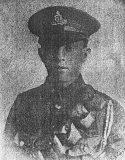
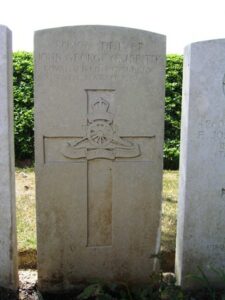
Thomas James, Wireless Operator, Mercantile Marine. Thomas was the son of John and Margaret James, of Blaenwaun, Henllan. He was educated at Emlyn Grammar School, before working for Marconi, and served as a Wireless Operator with the Mercantile Marine, aboard the SS Harmattan, a London registered steamer. On 5 May 1917, Harmattan was on route from Avonmouth with a cargo of Government Stores, when she struck a mine off Algeria, which had been laid by the German submarine UC-37. Thomas was among 36 of her crew who died that day. He was 19 years old, and is commemorated on the Tower Hill Memorial, London.

David Jones, Second Lieutenant, South Wales Borderers. David was the son of Henry and Margaret Jones, of Waunderwen, Henllan. He had been a Grocer prior to the war, and had then worked for the G.W.R. before enlisting into the Royal Army Medical Corps. David had served in France from 22 November 1915, working his way up to Sergeant, before he was commissioned into the 3rd Battalion, South Wales Borderers on 26 June 1917 after being selected for Officer Cadet Training late in 1916. He married Annie Williams, the daughter of David and Martha Williams, of 55, St. Helen’s Road, Swansea, while on leave on 20 December 1917. David then returned to France to join the 10th Battalion, South Wales Borderers, which was at Armentieres. The battalion was attached to 115 Brigade, 38th (Welsh) Division, and by April 1918 had moved to positions facing Aveluy Wood, north of Albert, on the Somme. On 21 August 1918 the division launched its assault across the River Ancre, and began driving the Germans back over the old Somme battlefield of 1916. It then moved towards the Canal du Nord and the mighty Hindenburg Line, taking part in the 100 days offensive which ultimately won the war. David was killed in action on 8 October 1918 during the assault on Villers-Outreaux, during the same action in which CSM John Henry Williams, DCM, MM, of the same battalion was awarded the Victoria Cross. David was 32 years old, and is buried in Guizancourt Farm Cemetery, Gouy, France.
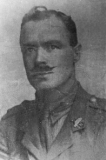
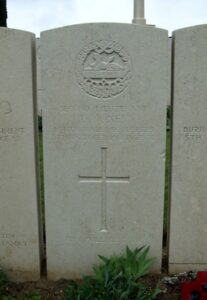
John Jones, Private, 12902, Royal Welsh Fusiliers. John was the son of Mrs. Anne Jones, of Pwllcornol Isaf, Penrhiwllan. He enlisted at Ammanford into the 9th Battalion, Royal Welsh Fusiliers, which was attached to 58 Brigade, 19th (Western) Division. John landed in France with the battalion on 19 July 1915, and moved to positions near Festubert, where it was initiated into trench warfare. The Division took part in the opening attack of the Battle of Loos on 25 September 1915. John became one of hundreds of men of the 19th Division killed that day, during a futile diversionary attack near Festubert. He was 22 years old, and is commemorated on the Loos Memorial, France.
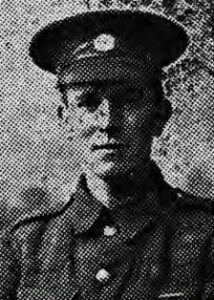
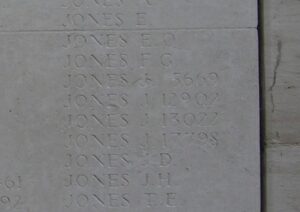
John Rees Jones, Private, 29779, King’s Shropshire Light Infantry. John was born at Llanfairorllwyn in 1881, the son of David and Hannah Jones, of Blaenmachnog, Horeb. John enlisted at Llandyssul into the 4th Battalion, Welsh Regiment, and served with the battalion in Palestine. John was later transferred to the 10th Battalion, King’s Shropshire Light Infantry, which was attached to 231 Brigade, 74th (Yeomanry) Division. The Division had formed in Egypt in January 1917 and had fought through the Palestinian Campaign, at the Battles of Gaza and the Battle and capture of Jerusalem. Due to the terrible casualties suffered by the British on the Western Front in March and April 1918 the Division was recalled to the Western Front, and arrived at Marseilles during May 1918. They then fought at the Second Battle of Bapaume during the great offensive, and fought in Flanders before returning to the Somme and fighting at the Battle of Épehy, as part of the offensive towards the Hindenburg Line. John was killed at Épehy on 7 September 1918, aged 37. He is buried at Villers-Faucon Communal Cemetery Extension, France.
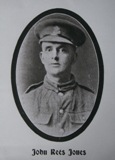
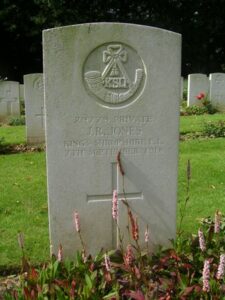
Samuel Jones, Private, M/5422, Royal Army Service Corps. Samuel was born at Penrhiwllan in 1890, the son of John and Ann Jones. Prior to the war he resided with his wife, Minnie L. M. Jones, at Brynivor, Horeb, Llandyssul. Samuel had been an early enlistee into the army, and had landed in France on 7 October 1914, serving with the Army Service Corps. He served in France for the duration of the war, but died in hospital at Chester, soon after demobilisation, on 7 March 1919. Samuel was 29 years old, and is buried at Gwernllwyn Congregational Chapelyard.
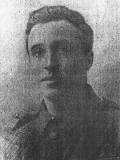
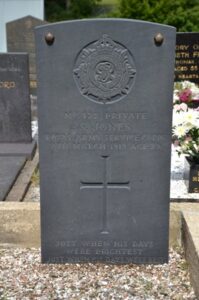
Daniel Lewis, Guardsman, 3446, Welsh Guards. Daniel was the son of Joshua and Ann Lewis, of Parke, Henllan. He enlisted at Aberystwyth into the Welsh Guards, which had been raised by Royal Warrant of 26 February 1915, at White City. On 18 August 1915 the Welsh Guards landed in France, and became attached to 3rd Guards Brigade, Guards Division. The Division fought at Loos in September 1915, and the following year saw them in action at Ypres and on the Somme. In 1917 they fought at Third Ypres, and the Battle of Cambrai. They remained in the area over the final winter of the war, and were stationed near Gouzeaucourt when the German Spring Offensive hit the area on 21 March 1918. The British retreated in the face of this onslaught, suffering severe casualties. After several weeks of intense fighting, the German Offensive petered out on the Somme, and after several months of stalemate, on 8 August 1918 an impressive victory around the town of Villers Brettoneux turned the war. On 21 August 1918 the British launched an attack on the Somme, and the Guards Division fought at the Battle of Albert, and pushed east, fighting at the Battle of Bapaume. From here on the Allies had the upper hand, and moved towards the Hindenburg Line, where the Guards Division fought at the Battle of Havrincourt and the Battle of the Canal du Nord. Once the Hindenburg Line had been broken, the Allies swept eastwards over territory that had been occupied by the Germans for four long years. The Guards fought at the Battle of Cambrai, and pushed north-eastwards towards the Forest of Mormal. Daniel was killed during the Battle of the Sambre, on 2 November 1918. He was 37 years old, and is buried at Poix-Du-Nord Communal Cemetery Extension, France.
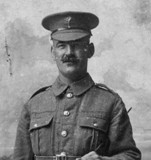
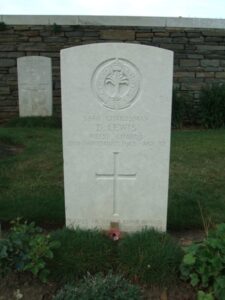
David Lewis, Gunner, 116821, Royal Field Artillery. David was the son of David and Sarah Lewis, and the brother of E. Lewis, of Llwyneos, Penrhiwllan. He enlisted at Lampeter into the Royal Field Artillery, and was posted to France during 1916, where he joined the 84th Battery, 11th Brigade, Royal Field Artillery, which was attached to the Fourth Army. David was at Ypres in the summer of 1917, and had been attached to the Labour Corps, when he was wounded during the Battle of Polygon Wood. He was evacuated to the Casualty Clearing Station near Poperinghe, where he died of his wounds on 26 September 1917. David was 23 years old, and is buried at Dozinghem Military Cemetery, Belgium.
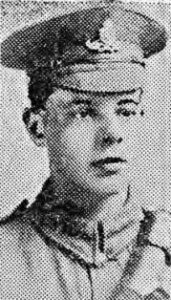
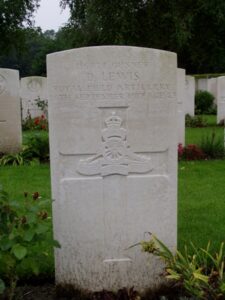
David James Lewis, Private, 5139, Welsh Regiment. David was the son of Thomas and Minnie Lewis, of 17, Waterloo Terrace, Pembroke Dock. He worked as a Signalman at Henllan Station prior to the war, and enlisted at Carmarthen into the 1/4th Battalion, Welsh Regiment, which was attached to 159 Brigade, 53rd (Welsh) Division. The Division moved to the Mediterranean, sailing from Devonport in July, 1915 arriving at Mudros by 5 August 1915. From here they moved to Gallipoli, landing on 9 August. Here the Division was immediately thrown into action, and spent the next few days in isolated pockets, fighting against a Turkish counter-attack during the Battle of Sari Bair, and then at the Attack on Scimitar Hill. David was killed here on 23 August 1915. He was 22 years old, and is buried at Hill 10 Cemetery, Gallipoli.
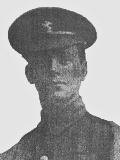
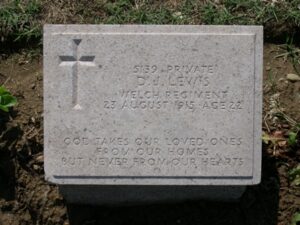
Marteine Kemes Arundel Lloyd, Captain, Grenadier Guards. Martine was the only son of Sir Marteine Owen Mowbray Lloyd, 2nd Bart, and Katherine Helena Lloyd (nee Dennistoun) of Bronwydd, Henllan. His father was the only Lord Marcher in Britain, and Marteine was his sole heir. He was educated at New Forest, Bournemouth, and at Eton, before being commissioned into the Grenadier Guards. Marteine landed in France on 4 October 1914, and joined his battalion, the 2nd Battalion, Grenadier Guards, at Ypres. The battalion was attached to the 4th (Guards) Brigade, 2nd Division, and took part in the Battle of Mons, and retreating southwards, fought at the Affair of Landrecies, the Rearguard Actions of Villers-Cotterets, and at the Battle of the Marne where the German offensive was stopped. The Germans retreated north, and the BEF met them, fighting at the Battle of the Aisne. The 2nd Division were then moved to Flanders, where they fought at the First Battle of Ypres, when the German sweep through Flanders was stopped. Marteine was wounded at Ypres in October 1914, and was mistakenly reported as being killed. He went back to France in January 1916, rejoining his battalion at Loos. By now the battalion was attached to the Guards Division, and in July 1916 the Division moved to the Somme, where they fought at the Battle of Flers-Courcelette. Marteine was killed in action at Flers on 15 September 1916. He was 26 years old, and is buried at Delville Wood Cemetery, Longueval, France.
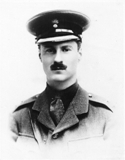
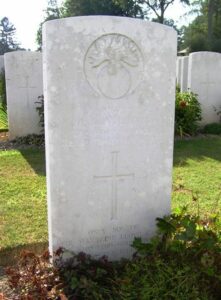
John Owen, Driver, T/1863, Royal Army Service Corps. John was born at Cardigan, but resided at Newcastle Emlyn prior to the war. He enlisted at Pentre into the Army Service Corps, and was attached to the Welsh Division Train, part of the 53rd (Welsh) Division. The Division moved to the Mediterranean, sailing from Devonport in July 1915 arriving at Mudros by 5 August 1915. From here they moved to Gallipoli, landing on 9 August. Here they immediately faced the chaotic leadership that was to lead to the ultimate failure of the campaign, and spent the next few days in isolated pockets, fighting against a Turkish counter-attack. The Division remained here throughout the coming months in terrible conditions, and John was taken ill. He was evacuated to the Base Hospital at Alexandria where he sadly died on 23 September 1915. He is buried there at Alexandria (Chatby) Military Cemetery, Egypt.
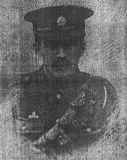
Henry Phillips, Private, 14168, Devonshire Regiment. Henry was the son of George and Hannah Phillips, of Llwyngwair, Penrhiwllan. He enlisted at Honiton into the Devonshire Regiment on 3 September 1914, and after training was posted to France on 2 April 1915, where he joined the 1st Battalion, Devonshire Regiment. The battalion was by then attached to 14 Brigade, 5th Division, and fought at Second Ypres in April 1915. On 12 January 1916 the battalion transferred to 95 Brigade, in the same Division, and in July 1916 took part in the opening of the Battle of the Somme. The Division saw heavy fighting on the Somme, and by September was fighting near Combles. On 13 September 1916, Henry was on sentry duty in the front line when he was killed by a German shell. His friends buried him behind the line, and marked his grave with a wooden cross. Henry was 22 years old, and rests in Combles Communal Cemetery Extension, France.
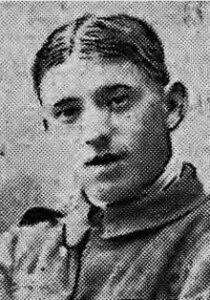
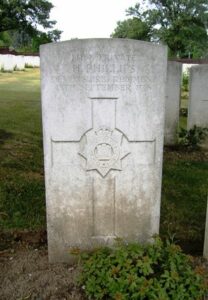
David Richards, Private, 16642, Royal Welsh Fusiliers. David was the son of Henry and Nancy Richards, of Aberbanc. He enlisted at Bronwydd into the 13th Battalion, Royal Welsh Fusiliers, which was attached to 113 Brigade, 38th (Welsh) Division. On 2 December 1915 the battalion moved to France, and the entire Division moved to the Fleurbaix sector, where it was initiated into trench warfare. During June 1916 the Division marched south to the Somme, and on 7 July 1916 attacked Mametz Wood. The initial attack failed, and it was three days later, on 10 July, that a fresh attack was mounted. After two days of heavy hand to hand fighting within the wood, the Germans withdrew, and the battered Welshmen moved via Hébuterne to Boesinghe, on the Yser Canal. David was badly wounded at Ypres on 1 July 1917, and died of his wounds late that day at the Casualty Clearing Station at Proven. He was 26 years old and is buried at Mendinghem Military Cemetery, Belgium.

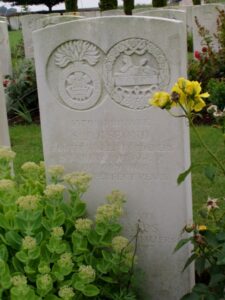
John Edmund Thomas, Deck Hand, 1253SD, Royal Navy. John was born on 1 January 1895, the son of George and Ann Thomas, of Penddol, Llandyfriog. He served in the Royal Navy aboard H.M. Trawler Euston. She had been hired by the Admiralty during the war, and struck a mine off Hartlepool on 12 February 1917. John was 22 years old when he was killed in the resulting explosion. He is commemorated alongside his shipmates on the Plymouth Naval Memorial, Devon.
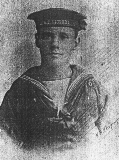
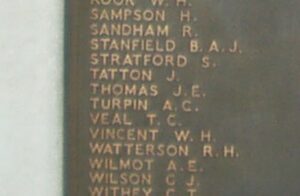
John Mathias Thomas, Private, 235259, King’s Liverpool Regiment. John was the son of David and Anne Thomas, of Ornant, Penrhiwllan. He enlisted at Brecon into the army, and served with the Yorkshire Regiment, before being posted to the 17th Battalion, King’s Liverpool Regiment. The battalion landed at Boulogne on 7 November 1915 attached to 89 Brigade, 30th Division, and took part in its first major action during the Somme Offensive, at the Battle of Albert, where they captured Montauban. They then fought during the latter stages of the offensive, during the Battle of Le Transloy, before wintering on the Somme. In March 1917 the Division followed the German Retreat to the Hindenburg Line, and in April took part in the First Battle of the Scarpe, and then at the later Second Battle of the Scarpe. Later that year they were moved north to Ypres, and fought at the Battle of Pilckem. At the beginning of 1918 the Division were stationed near St. Quentin, and when the Germans launched their Offensive here on 21 March, the Division took part in the Battle of St Quentin, but were pushed back, fighting at the Actions at the Somme Crossings, and the Battle of Rosieres. They were then pulled from the line to rest and rebuild, and moved to Flanders, but were caught up in the action again here when the Germans launched a fresh offensive along the Lys, fighting at the First Battle of Kemmel. John was killed in action here on 17 April 1918. He was 40 years old, and is buried at Westoutre British Cemetery, Belgium.
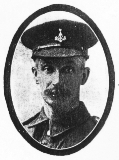
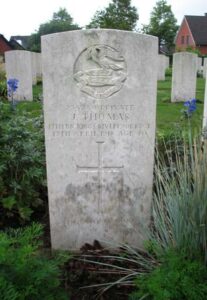
World War Two, 1939-1945
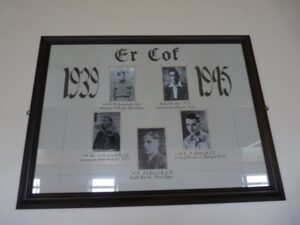
David Cecil Robson Branfield, Private, 14685121, Black Watch. David was the son of William Henry and Hannah Dorothy Branfield, of Aberbanc, Llandyssul. He served with the 1st Battalion, Black Watch (Royal Highlanders). In 1940, the 1st Battalion, Black Watch was captured at St Valery-en-Caux with the 51st (Highland) Division. They were later reformed from reserve units of the 9th (Highland) Infantry Division. It would have been at sometime after its reformation that David joined the battalion, which fought at the Battle of El Alamein and the Allied invasion of Sicily. The Highlanders were then recalled to England, and took part in the D-Day Landings, and the subsequent drive through France and Belgium into Holland, and Northern Germany. David was killed during severe fighting in the German borderland on 24 March 1945. He was 21 years old, and is buried at Reichswald Forest War Cemetery, Germany.
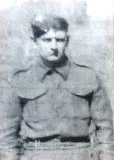
John Evans, Ordinary Seaman, Merchant Navy. John was the son of John and Frances Evans, of Garregwen, Bangor Teifi. He served with the Merchant Navy aboard the SS Pontypridd, a London registered cargo steamer. He was killed while his ship was in dock at Barry Roads, London on 3 February 1940 after falling down No. 1 Hold. John was just 21 years old. As he is not a casualty of war, he is not commemorated by the CWGC. His ship was lost on 11 June 1942 after having been torpedoed and sunk by the German submarine U-569.
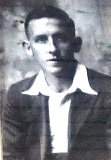
John Morgan Jones, Flight Sergeant (Pilot), 1313908, Royal Air Force Volunteer Reserve. John was the son of Evan and Margaret Jones, and the brother of Tom Jones, Post Office, Pentrecwrt. He volunteered to serve with the Royal Air Force, and was posted to No. 58 Operational Training Unit at RAF Tealing near, Angus, Scotland, for training as a fighter pilot. On 29 December 1943, John was flying Spitfire P8650, when he hit some trees during a low flying exercise, and crashed. John was killed in the accident, and was brought home for burial at Bwlchygroes Independent Chapelyard.
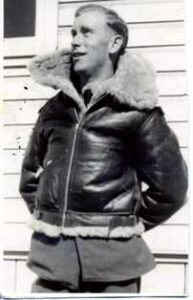
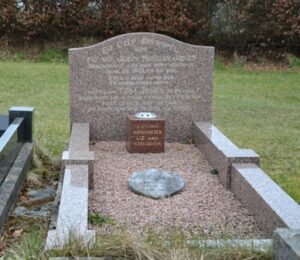
Teifi Jones, Aircraftman 1st Class, 1123171, Royal Air Force Volunteer Reserve. Teifi was the son of John and Ellen Jones, of Cwmgilfachwen, Llandyssul. He served in the RAFVR, and had been captured at some time by the Japanese in the Far East, and given the POW No. 2659. Teifi was taken to Sandakan Number 2 Camp, and the British were later moved from this camp to the Number 1 Camp about 15 April 1945. Survivors were then moved back to a wired section of Number 2 Camp on 29 May 1945. Teifi is recorded as having died of Malaria while a POW, on 21 July 1945. There is evidence of a large number of POW’s murdered by the Japanese on the ‘Sandakan Death Marches’ and their deaths were attributed by the Japanese to disease. Teifi was 23 years old, and is remembered on the Singapore Memorial.
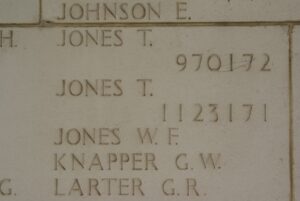
John Ieuan Rees, Flight Engineer, Royal Air Force. John had been a Prisoner of War during the war, probably after having been in an aircraft which was shot down over Nazi held Europe. He remained in the Royal Air Force after the war, but was killed in an air crash at RAF Northolt on 4 July 1948, aged 27. Nothing more is known of John, as he is not commemorated by the CWGC.
